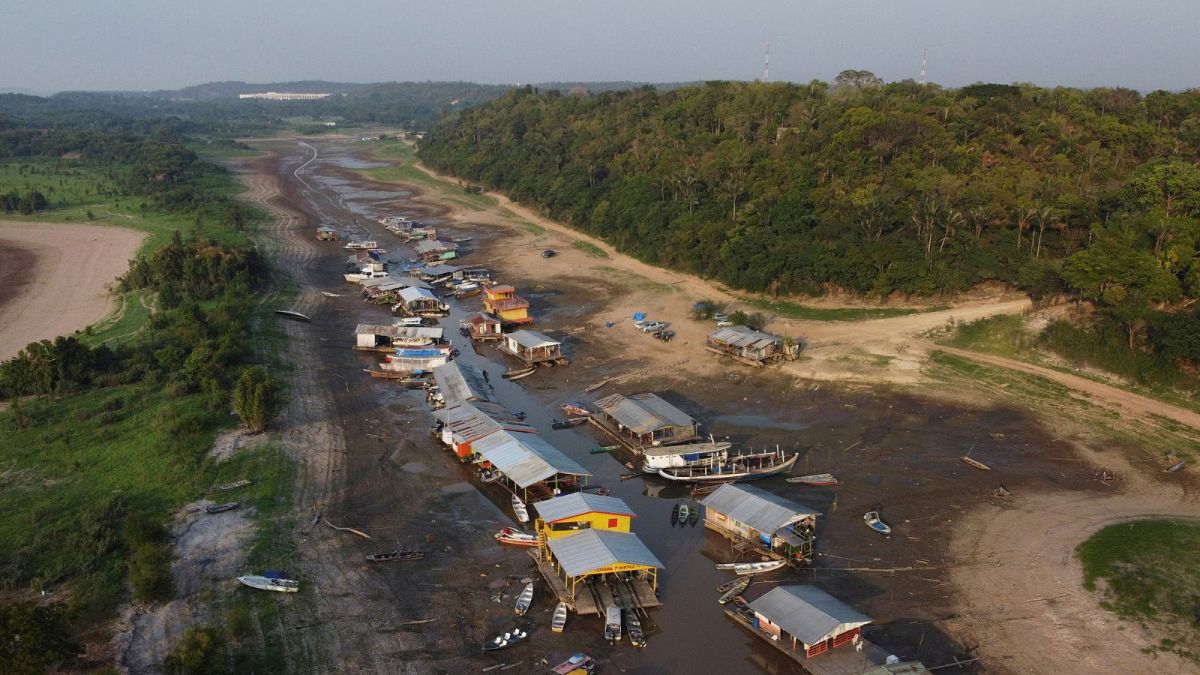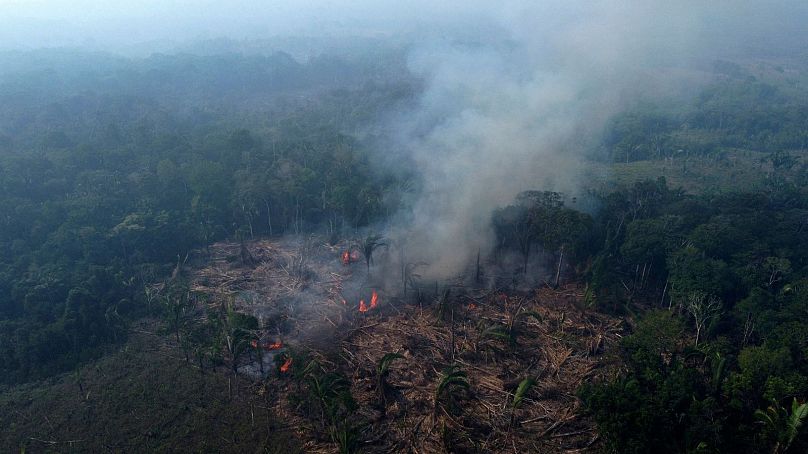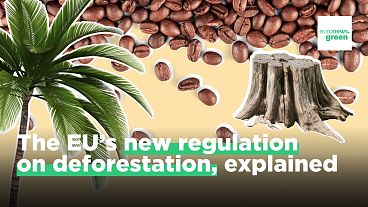The vital ecosystem could also flip between rainforest and Savanna-like vegetation if drought deepens, the research finds.
The Amazon rainforest is approaching a tipping point which would have devastating consequences for the world’s climate system, new research shows.
Up to 47 per cent of ‘the planet’s lungs’ could be threatened by rising temperatures, droughts, deforestation and fires by 2050, according to scientists from the Potsdam Institute for Climate Impact research (PIK) in Germany.
The southeastern Amazon in Brazil has already shifted from being a carbon sink to a carbon source, meaning it emits more of the greenhouse gas than it absorbs.
As PIK scientist Boris Sakschewski explains, that proves “the current amount of human pressure is too high for the region to maintain its status as a rainforest over the long term.”
But the problem doesn’t stop there, he says. “Since rainforests enrich the air with a lot of moisture which forms the basis of precipitation in the west and south of the continent, losing forest in one place can lead to losing forest in another in a self-propelling feedback loop or simply ‘tipping’.”
What happens if the Amazon tipping point is crossed?
The Earth has a number of natural thresholds that, if breached, could cause temperatures to spiral out of control and trigger devastating domino effects for ecosystems and people.
Amazon dieback is one of these, alongside the collapse of big ice sheets in Greenland and the West Antarctic, the death of coral reefs in warmer seas, and the collapse of an important Atlantic ocean current.
The impact of forest loss does not stop at the borders of the Amazon, authors of the new study published in the journal Nature today explain.
Mirroring its mighty river, the Amazon’s trees suck up water and pump out billions of tonnes of water vapour a day into huge ‘flying rivers’. This skyborne moisture is a critical part of the South American Monsoon - and so essential for rainfalls in vast parts of the continent.
And as the Amazon as a whole still stores carbon equivalent to 15-20 years worth of current human CO2 emissions, releasing this through forest loss would significantly escalate global warming.
What are the biggest threats to the Amazon?
In their study, the international team of researchers have identified five climatic and land-use thresholds that should not be breached in order to keep the Amazon resilient.
These are: global warming, annual rainfall amounts, the intensity of rainfall seasonality, dry season length, and accumulated deforestation. For each of these drivers, the scientists suggest safe boundaries to stop the Amazon crossing its tipping point.
The rainforest cannot exist if mean annual rainfall drops below 1,000 mm, for example. But, Da Nian, another PIK scientist and co-author of the study explains, below 1,800 mm per year, “abrupt transitions from rainforest to a Savanna-like vegetation become possible.
“This can be triggered by individual droughts or forest fires, which both have become more frequent and more severe in recent years.”
Given the current trajectory of global heating, and direct attacks on the forest from logging and fires, the study finds that 10-47 per cent of the Amazonian forests will be threatened by increasing disturbances, pushing this precious ecosystem to its limit.
What will happen to destroyed parts of the Amazon?
The study also analyses examples of disturbed forests in various parts of the Amazon to understand what could happen to the ecosystem.
In some cases, the forest may recover in the future, but still remain trapped in a degraded state, dominated by opportunistic plants such as lianas or bamboos.
In other cases, the forest does not recover anymore, and remains trapped in an open-canopy, flammable state. The expansion of open, flammable ecosystems throughout the core of the Amazon forest is particularly concerning because they can spread fires to adjacent forests.
Scientists call for an end to deforestation and greenhouse gas emissions
Climate tipping points like Amazon loss are hard to comprehend in their complexity and enormity. But the call to action from the study authors is familiar and clear.
“To maintain the Amazon forest within safe boundaries, local and global efforts must be combined,” says co-author Niklas Boers, leader of the Future Lab 'Artificial Intelligence in the Anthropocene' at PIK and professor of Earth System Modelling at the Technical University of Munich.
“Deforestation and forest degradation have to end and restoration has to expand. Moreover, much more needs to be done to stop greenhouse-gas emissions worldwide.”




